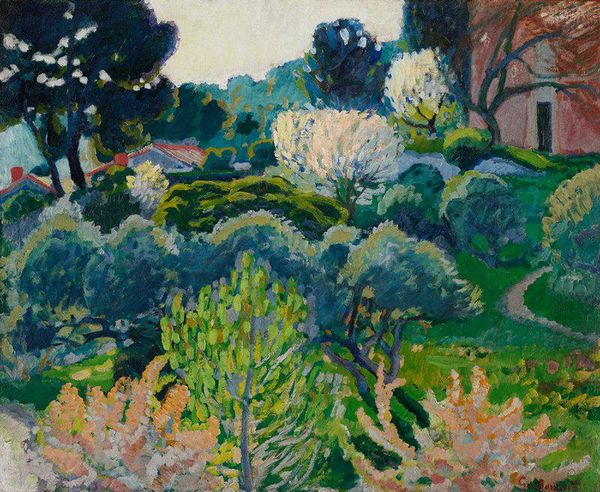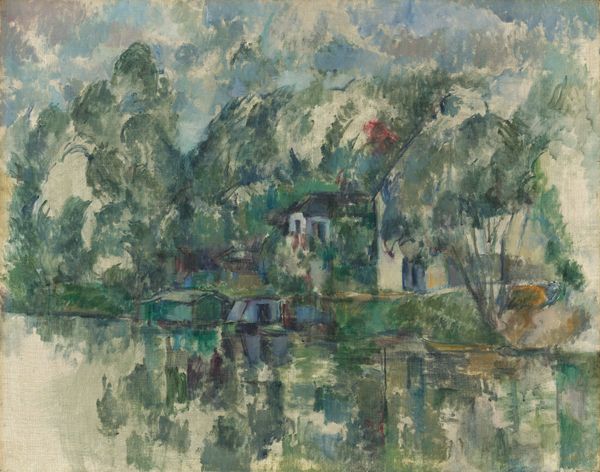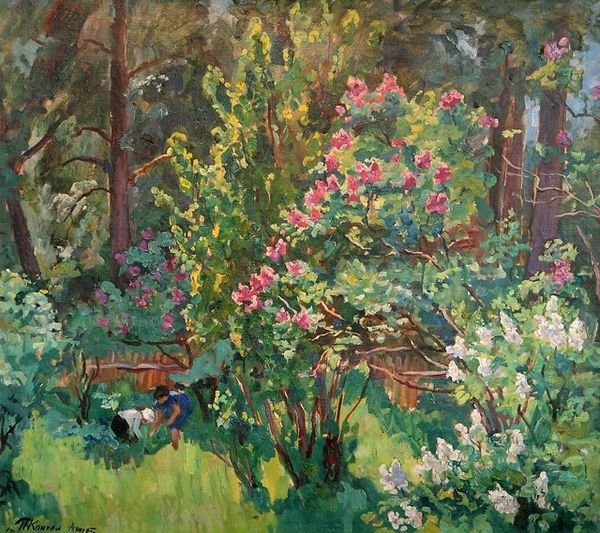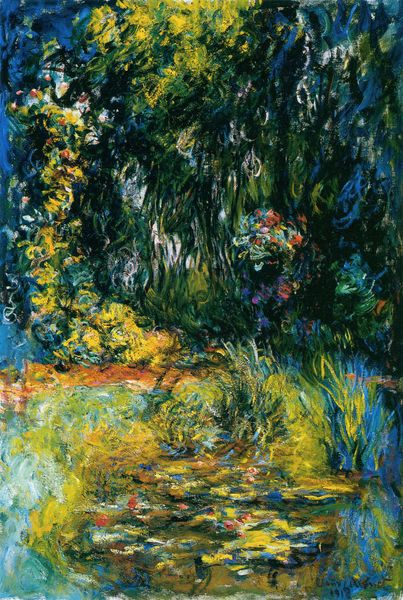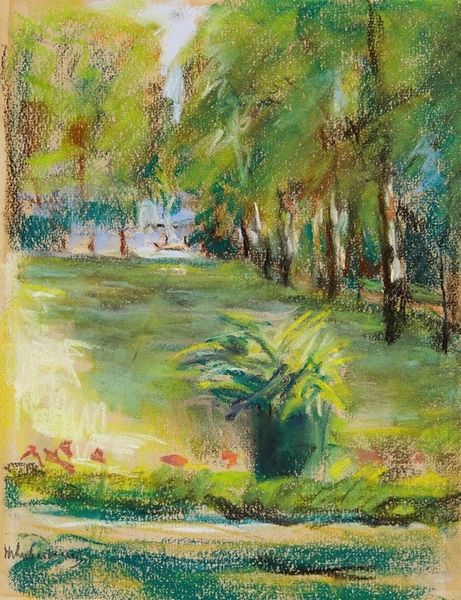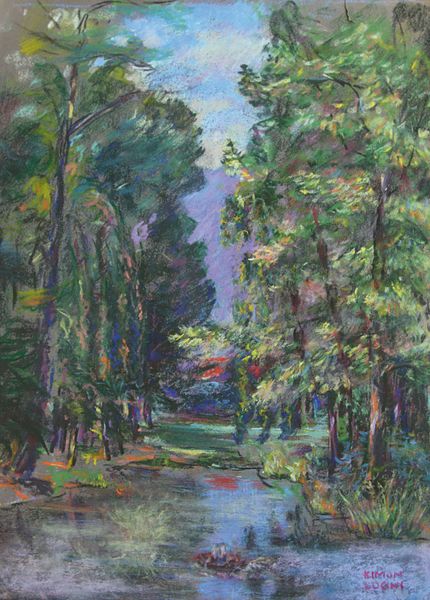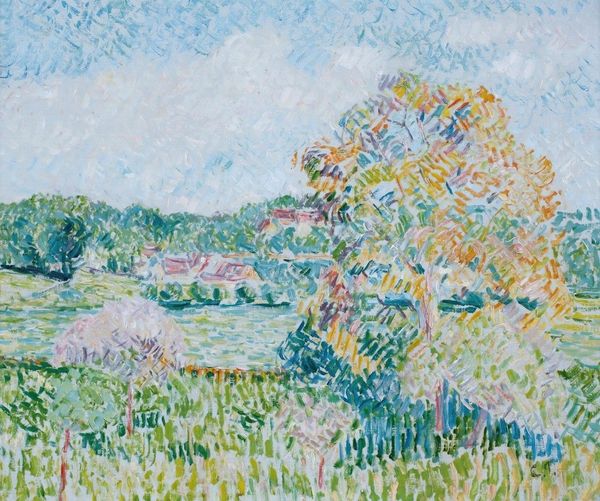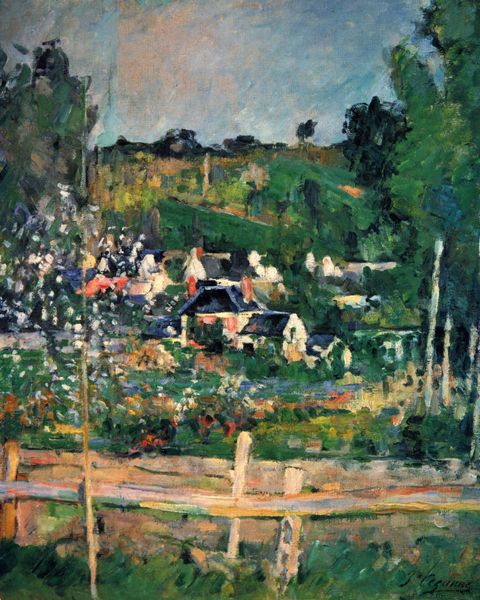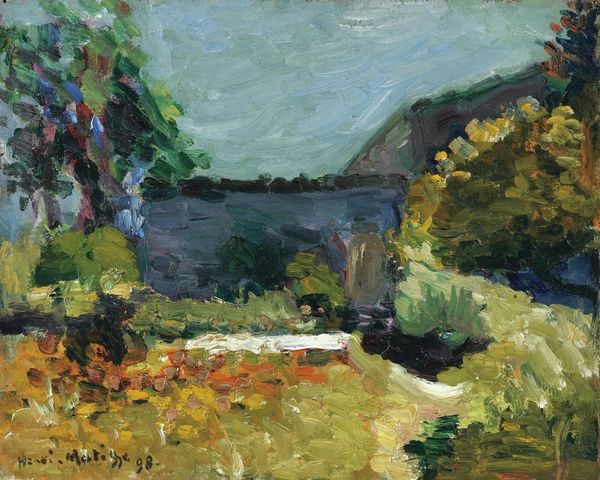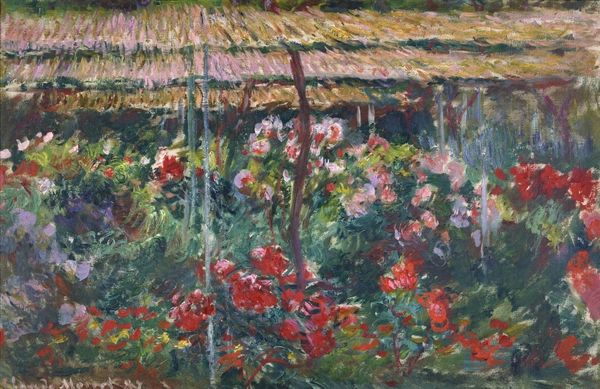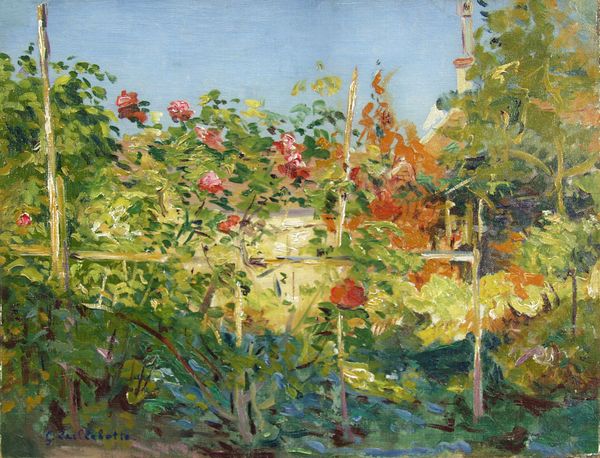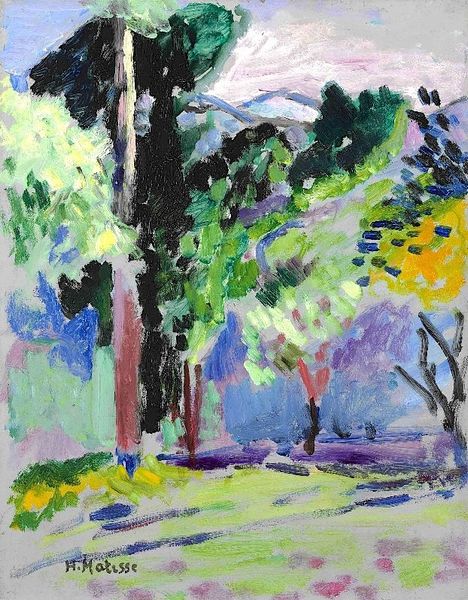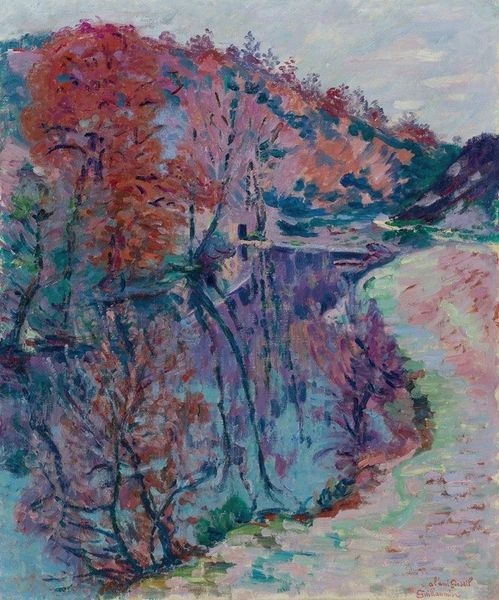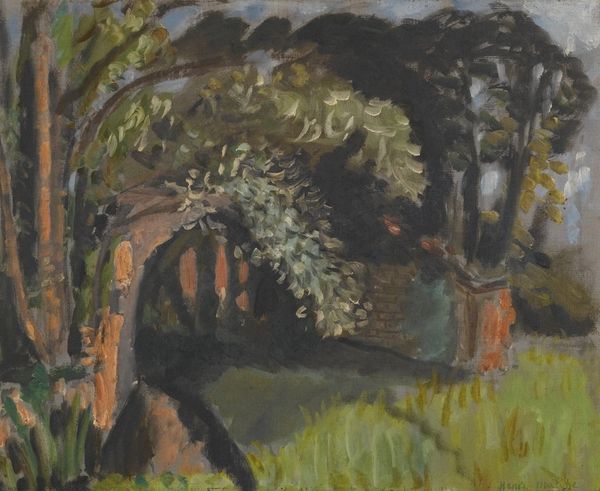
Copyright: Cuno Amiet,Fair Use
Editor: This is Cuno Amiet's "Garden with Woodland," an oil painting from 1933. I find the color palette unexpectedly subdued for a garden scene. What do you see in this piece? Curator: Amiet paints a very specific type of garden here. It's not wild or untamed. There’s an inherent order—those almost perfectly round trees, for example, suggest human intervention, control. Given its creation in 1933, on the brink of immense political upheaval in Europe, do you see this depiction of a controlled, ordered nature as a potential metaphor? Perhaps for a longing for stability in a world that was rapidly descending into chaos? Editor: That's a fascinating perspective. I was initially focused on the visual aspects, but thinking about the historical context adds a new layer of meaning. Could the wall also symbolize a kind of separation or protection? Curator: Precisely. And consider Amiet’s artistic background – he was part of the post-impressionist movement. They were questioning the very nature of representation. How does that influence your perception of his rendering of the garden, especially considering the tumultuous times? Editor: It makes me wonder if the slightly unsettling feeling comes from that tension – a traditional subject depicted in a way that acknowledges the changing world. So, it's both a garden and something more…a reflection on the state of things? Curator: Absolutely. And it reminds us that even seemingly innocuous subjects can be laden with socio-political commentary. What do you take away from looking at "Garden with Woodland" through this lens? Editor: I'm starting to appreciate how essential it is to consider the time, the context, the movement to understand any work of art. Thanks, that's given me so much more to consider. Curator: It highlights how art always converses with its moment, and with us.
Comments
No comments
Be the first to comment and join the conversation on the ultimate creative platform.
